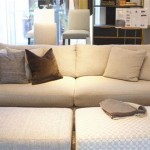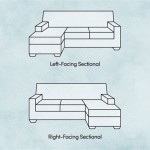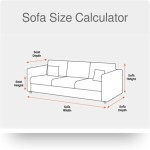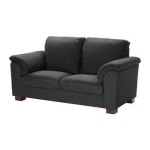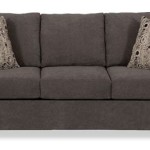DIY Slipcovers for Sectional Sofas with Chaise
Sectional sofas with chaise lounges offer comfort and style, but keeping them clean and aesthetically pleasing can be a challenge. Children, pets, and everyday wear and tear can take a toll on the upholstery. Purchasing new furniture is often an expensive solution, but a cost-effective alternative is creating DIY slipcovers. This approach not only protects the original upholstery but also allows for easy updates to match changing decor preferences.
Measuring and Planning
Accurate measurements form the foundation of a well-fitting slipcover. Begin by meticulously measuring each section of the sofa, including the chaise. Record the length, width, and height of the back cushions, seat cushions, armrests, and the chaise itself. Consider the depth of the cushions as well. Sketching a simple diagram of the sectional, labeling each section with corresponding measurements, can be helpful. This visual aid simplifies the process and minimizes errors during the cutting and sewing stages. Choosing the correct fabric is crucial. Consider durability, washability, and the overall aesthetic of the room. Durable fabrics like canvas, denim, or twill are recommended for high-traffic areas. Lighter fabrics like linen or cotton offer a more delicate appearance but may require more frequent cleaning.
Choosing the Right Fabric and Materials
Once measurements are complete, calculate the necessary yardage based on the chosen fabric's width. Add extra fabric for pattern matching, seam allowances, and potential mistakes. Purchasing slightly more fabric than calculated can prevent shortages and ensure a cohesive final product. Beyond the fabric, gather essential supplies. These include sharp fabric scissors, pins, measuring tape, a sewing machine (though hand-sewing is possible), thread that matches the fabric, and a seam ripper for corrections. Pattern paper, either purchased or created from large sheets of paper, will also be necessary for drafting the pattern pieces.
Creating the Pattern
Creating a custom pattern ensures a precise fit for the sectional. Using the recorded measurements and the sectional diagram, draft pattern pieces for each section of the sofa. Lay the pattern paper over each section, smoothing it over the curves and contours. Trace the outline of each section onto the paper, adding seam allowances of approximately one inch. Clearly label each pattern piece to avoid confusion during assembly. Take special care when creating the pattern for the chaise, ensuring accurate representation of its unique shape. Consider using a flexible ruler or French curve to achieve smooth, accurate lines along the curved edges.
Cutting and Sewing
With the pattern complete, carefully pin the pattern pieces to the fabric. Ensure the fabric grain runs in the desired direction for a consistent drape. Cut out the fabric pieces, following the pattern lines precisely. Before sewing the main pieces, create a test slipcover from inexpensive muslin or old sheets. This allows for adjustments and refinements to the pattern without wasting the chosen fabric. Once satisfied with the test fit, begin sewing the fabric pieces together, following the pattern lines and seam allowances. Use pins to hold the fabric together and ensure accurate alignment.
Fitting and Adjustments
After assembling the slipcover sections, drape it over the sectional sofa. Pin any areas that require adjustments, such as excess fabric or tightness. Remove the slipcover and carefully make the necessary alterations. Re-fit the slipcover and repeat the process until a snug and comfortable fit is achieved. Consider incorporating features like ties or elastic bands at the bottom edges to secure the slipcover and prevent shifting. These additions can enhance the overall appearance and functionality of the finished product.
Finishing Touches
Once the fit is finalized, finish the raw edges of the slipcover to prevent fraying. Options include serging, zigzag stitching, or using bias tape. Press the seams for a polished and professional look. Finally, add any desired decorative elements, such as piping, cording, or contrasting fabric accents. These details can personalize the slipcover and complement the existing decor. Regular cleaning and maintenance will prolong the life of the slipcover. Follow the care instructions for the chosen fabric to ensure its longevity and retain its appearance.

How To Make A Sectional Slipcover Confessions Of Serial Do It Yourselfer

Make A Dropcloth Sofa Sectional Slipcover Tatertots And Jello

How To Make A Sectional Slipcover Confessions Of Serial Do It Yourselfer

How To Make A Sectional Slipcover Confessions Of Serial Do It Yourselfer

Make A Dropcloth Sofa Sectional Slipcover Tatertots And Jello

L Shaped Chaise Lounge Sofa Couch Sectional Corner Throw

How To Make A Sectional Slipcover Confessions Of Serial Do It Yourselfer

Diy Couch Cover Ideas Easy Sofa Slipcovers You Can Make O Sewing

Make A Dropcloth Sofa Sectional Slipcover Tatertots And Jello

Diy Couch Cover Ideas Easy Sofa Slipcovers You Can Make O Sewing



